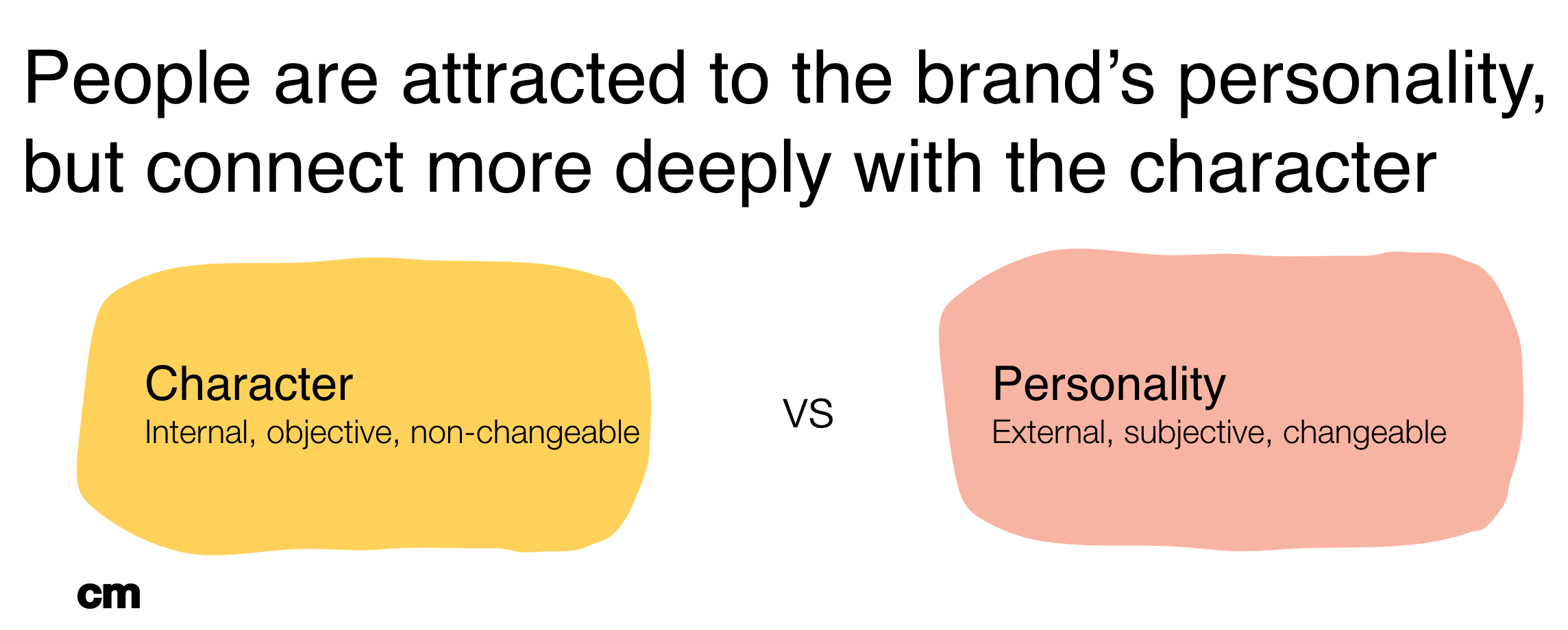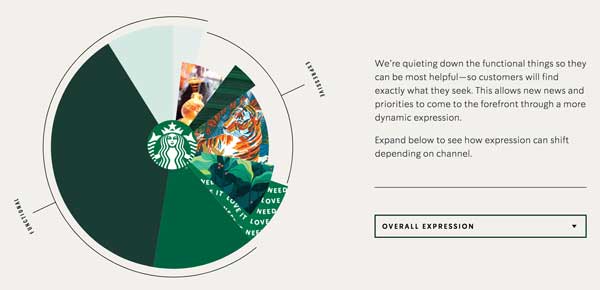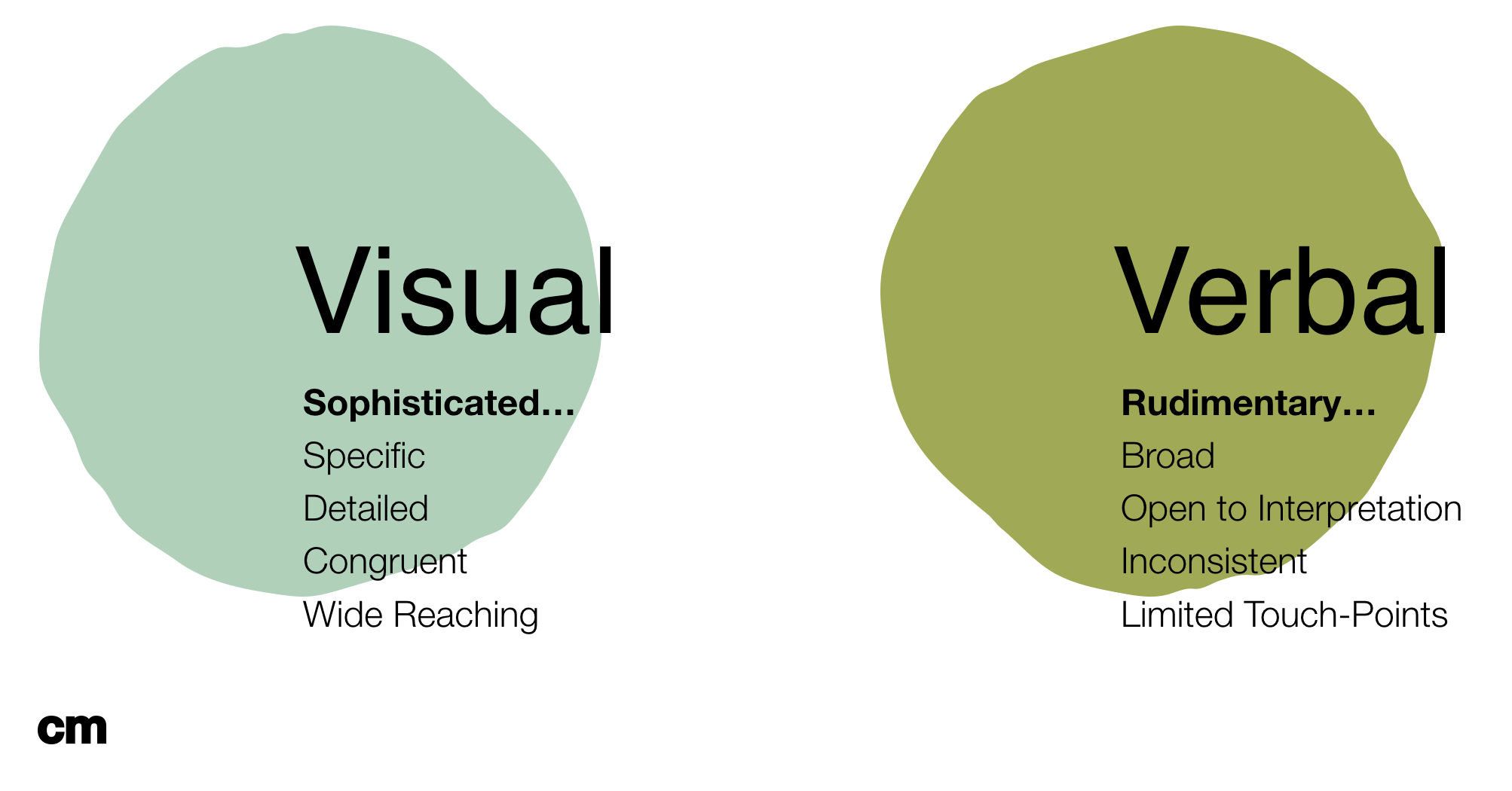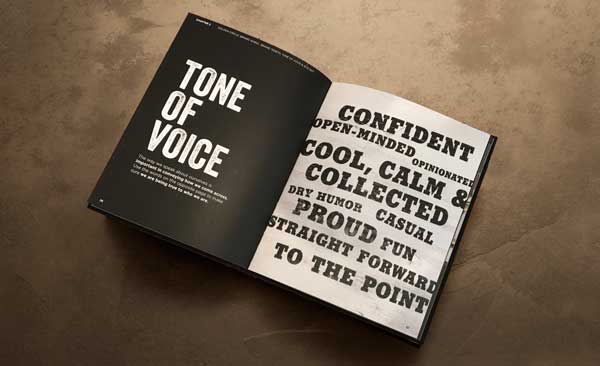Written by
Melissa Lohrer
It’s easy as a brand builder or marketer to treat your verbal identity as secondary. Once the visual assets are in place, it follows along as afterthought. But at a time when millions of brands are shouting into the expanse of the Internet, your words wield more power than ever. And consumers know it: 52% of them expect brands to know the right moments to speak.
Defining verbal identity is more than picking a few generic personality traits—architecting a true 360º brand identity requires depth, nuance and precision.
Character is core
Language and character have the same symbiotic relationship for brands as they do for a story’s hero. What you say and how you say it solidify who your brand is—but you can’t begin to speak authentically until you’ve defined your character.
"When it comes to defining your brand’s character, think like a novelist," says our founding partner, Catherine Clark.

Character is the core of a brand and needs to be addressed with nuance.
Your character should come from within and be informed by the history, relationships and experiences of the brand. For example, does it have “parents”— founders or personalities whose own character are deeply reflected in the brand itself? Was it born out of conflict or tension? Is it an innovator or a fighter brand?
In our work, we often see companies using personality—or the reflection of a brand on the most superficial level—in place of character—which is determined by the true core of the brand. While personality is key to attracting consumers, its character that will forge deeper connections. Verbal branding is a place where character has a chance to shine through.
Character is critical when it comes to language. The words we choose, the phraseology we have, the way we articulate—they’re all a reflection of who we are.
The stronger the character is developed, the more anyone who touches the brand will be creatively inspired to apply imagination to the storytelling—all while remaining on brand.

Speak at the right moments
Brands increasingly live in places that marketeers can’t fully control—like influencer content, social conversations, and AI. On the flip side, increasingly powerful digital platforms give brands the opportunity to always be in contact with their audience.
Verbal branding exists across an array of touchpoints—some that marketers have control over, others that they don’t.
Part of the delicate balance of good verbal branding is knowing when to speak and when to stay quiet. Speaking out thoughtfully during a moment that’s particularly relevant to your brand’s values can strengthen your relationship with your audience—and knowing your character will help you to discern these moments and how your brand should respond.
Like people, a brand’s true character is revealed in the key moments that matter. So in that moment of truth, remember to:
For one example, take a look at how Mattel adapted its mission with authenticity as the world around us was shutting down. Rallying behind the message that “play is never canceled,” the trusted toymaker walked the walk by launching a free digital playroom for kids at home and raising money for first responders through a line of healthcare hero-inspired action figures. Their #KeepPlaying and #PlayItForward initiatives struck the chord of hopeful resilience that their audience of families expected of them.
A practical application
Your storytelling should be authentic yet dynamic. Recent events have highlighted this more than ever - brand messaging needs to be adapted to the context we are in and the mindset of your consumer.
Offering clear ways to adapt your brand voice to the situation at hand should be one of the end goals of any verbal branding exercise.
Take a look at the Starbucks brand’s verbal theory. With a clearly defined spectrum that runs from functional to expressive, the brand has narrowed down what language is appropriate and where—and provided explicit examples for all teams to learn from and consult.
On the flip side, when verbal principles are rigid and created as one size fits all, messaging can come across as insensitive and tone deaf.
“Language is a conversation so it needs to flex,” says our founding partner Paul McDowall. “What you cannot deviate from is the character and the lexicon you’re creating for the brand itself.”
What success looks like
Brands often don’t think about their verbal identity until a problem arises and it’s too late. In a multi-dimensional, always connected world, verbal can be a powerful tool if you know how to use it.
Who, internally, is overseeing the language your brand uses? Do you have the right tools in place to inspire those that speak on behalf of the brand? Is your verbal identity supporting and maximizing the impact of your visual identity?
Visual branding has evolved over decades. Verbal should have the same level of investment.

Strong verbal brands require two key commitments: training and guidelines. Everyone who uses words for your brand—from marketers to customer service representatives—should be part of the conversation on how your brand speaks.
This training should be focused on your guidelines, including tools like word palettes, examples of verbal branding practically applied, and how-to’s. It’s not as much about setting rules as it is about creating a character that inspires.
Tone of voice from the Stubborn Soda brand book – see the full case study here
"It’s not about asking people to write,” says Catherine. “It’s about getting them to respond to examples and collectively feel what our voice and character are.”
At the end of the day, members of your team shouldn’t leave training feeling bogged down by a laundry list of restrictions, but excited—to have collective ownership over your brand’s voice, to more deeply understand your brand’s character, and to release that character out into the real world.
Interested in learning more about verbal branding and best practices?

Sign up for the latest news and views
